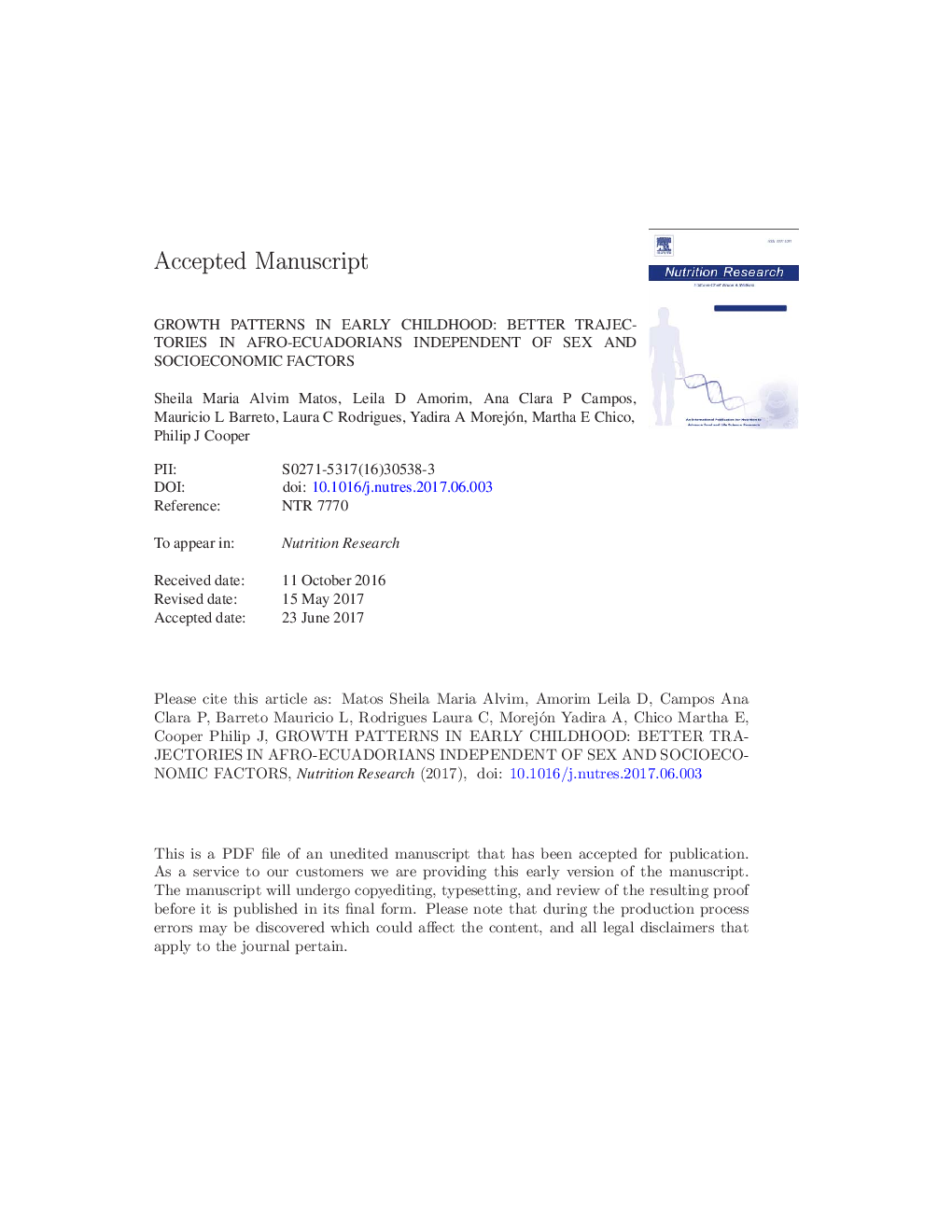| Article ID | Journal | Published Year | Pages | File Type |
|---|---|---|---|---|
| 5588606 | Nutrition Research | 2017 | 32 Pages |
Abstract
The first years of life are the most dynamic period for childhood growth. There are limited data available on growth patterns of infants and children living in rural Latin America. The aim of this study was to describe the growth patterns from birth to 5Â years in children living in a rural District of tropical coastal Ecuador using data from a birth cohort of 2404 neonates. We hypothesize that there would be growth differences according to ethnicity and sex. Evaluations were conducted at birth or until 2Â weeks of age and at 7, 13, 24, 36 and 60Â months during clinic and home visits. Individual growth trajectories for weight-for-age, height-for-age and weight/height-for-age Z-scores were estimated using multilevel models. Girls were lighter and shorter than boys at birth. However, Afro-Ecuadorian children (versus mestizo or indigenous) were longer/taller and heavier throughout the first 5Â years of life and had greater mean trajectories for HAZ and WAZ independent of sex and socioeconomic factors. Our data indicate that ethnicity is a determinant of growth trajectories during the first 5Â years of life independent of socioeconomic factors in a birth cohort conducted in a rural region of Latin America.
Keywords
Related Topics
Life Sciences
Biochemistry, Genetics and Molecular Biology
Endocrinology
Authors
Sheila Maria Alvim Matos, Leila D. Amorim, Ana Clara P. Campos, Mauricio L. Barreto, Laura C. Rodrigues, Yadira A. Morejón, Martha E. Chico, Philip J. Cooper,
